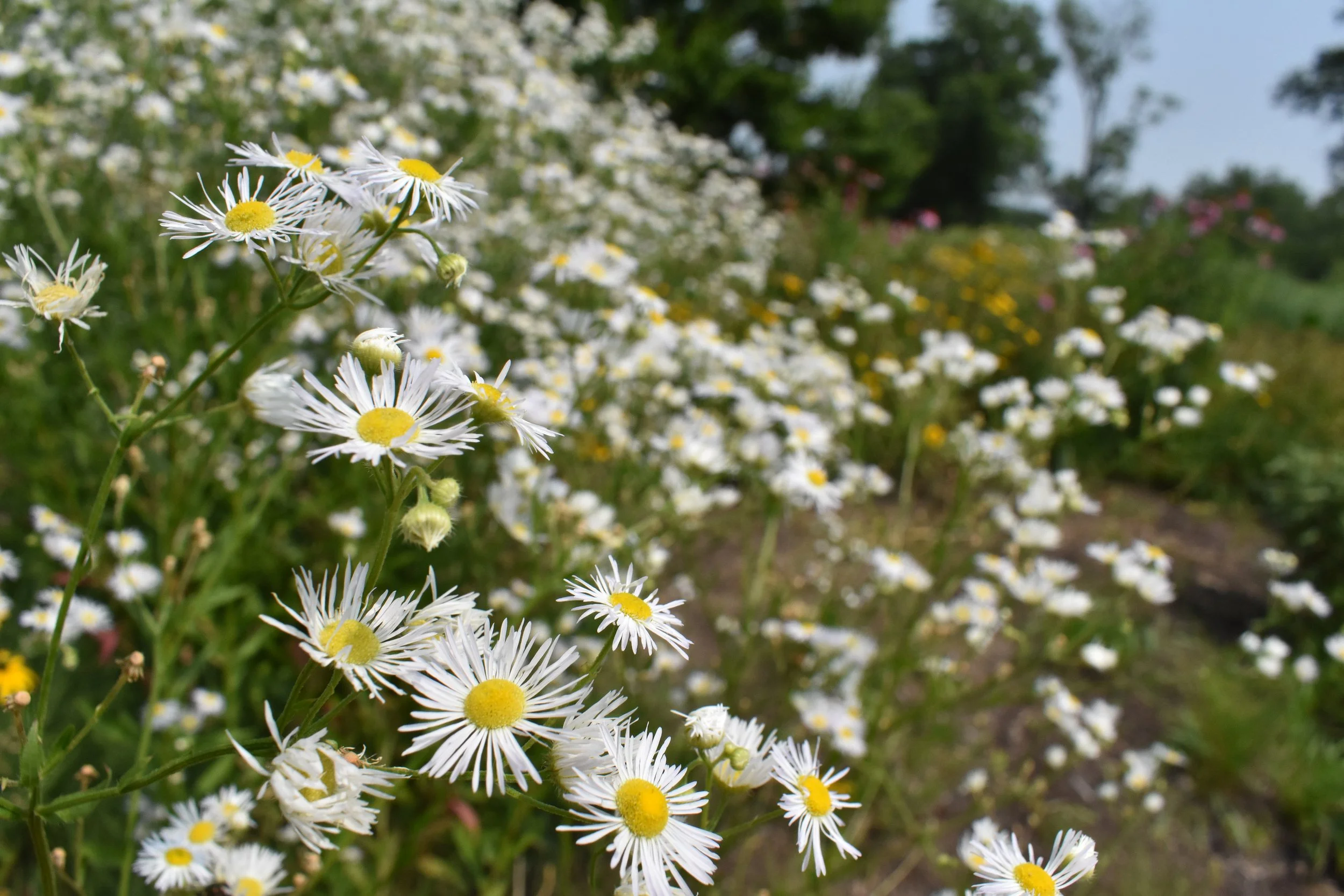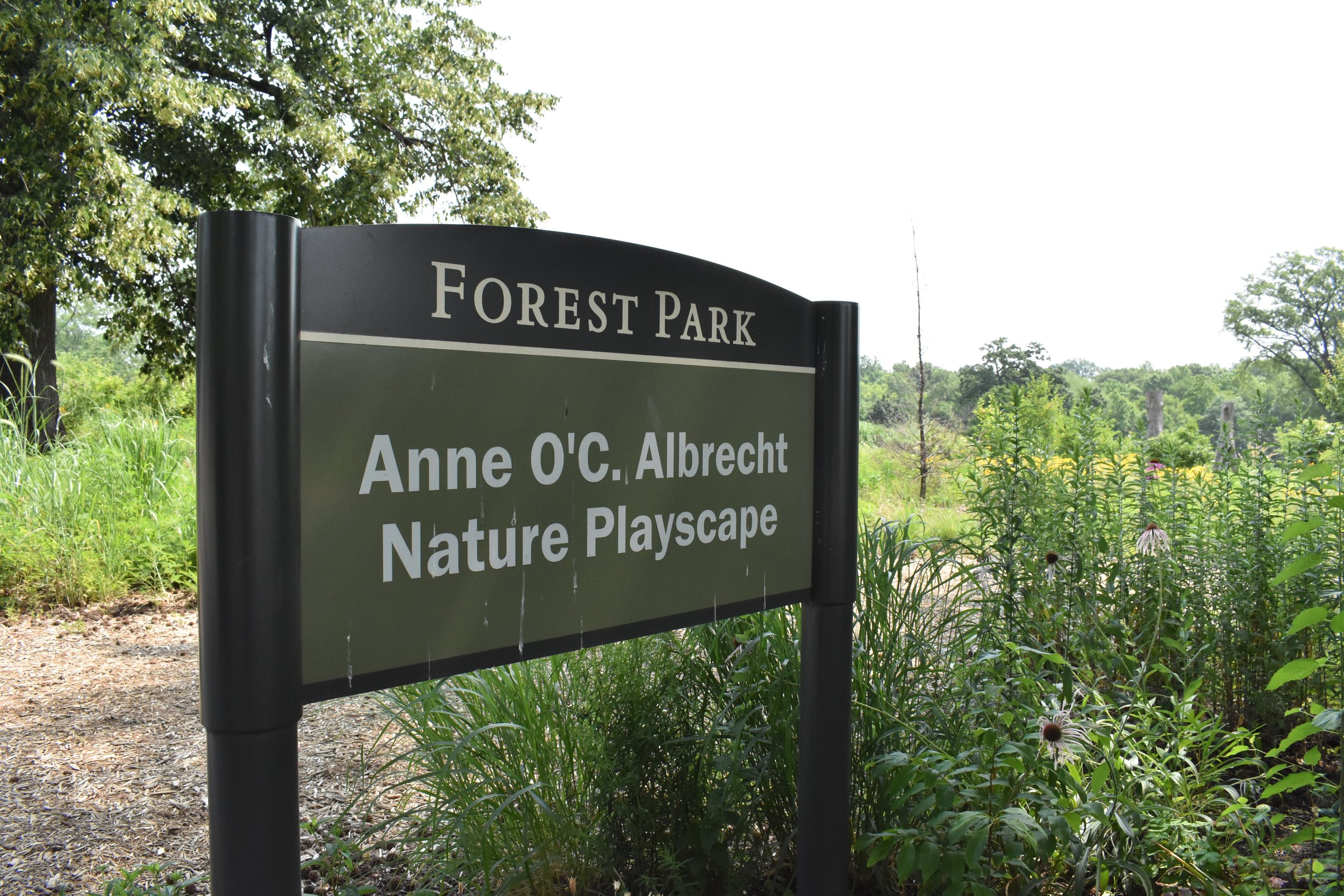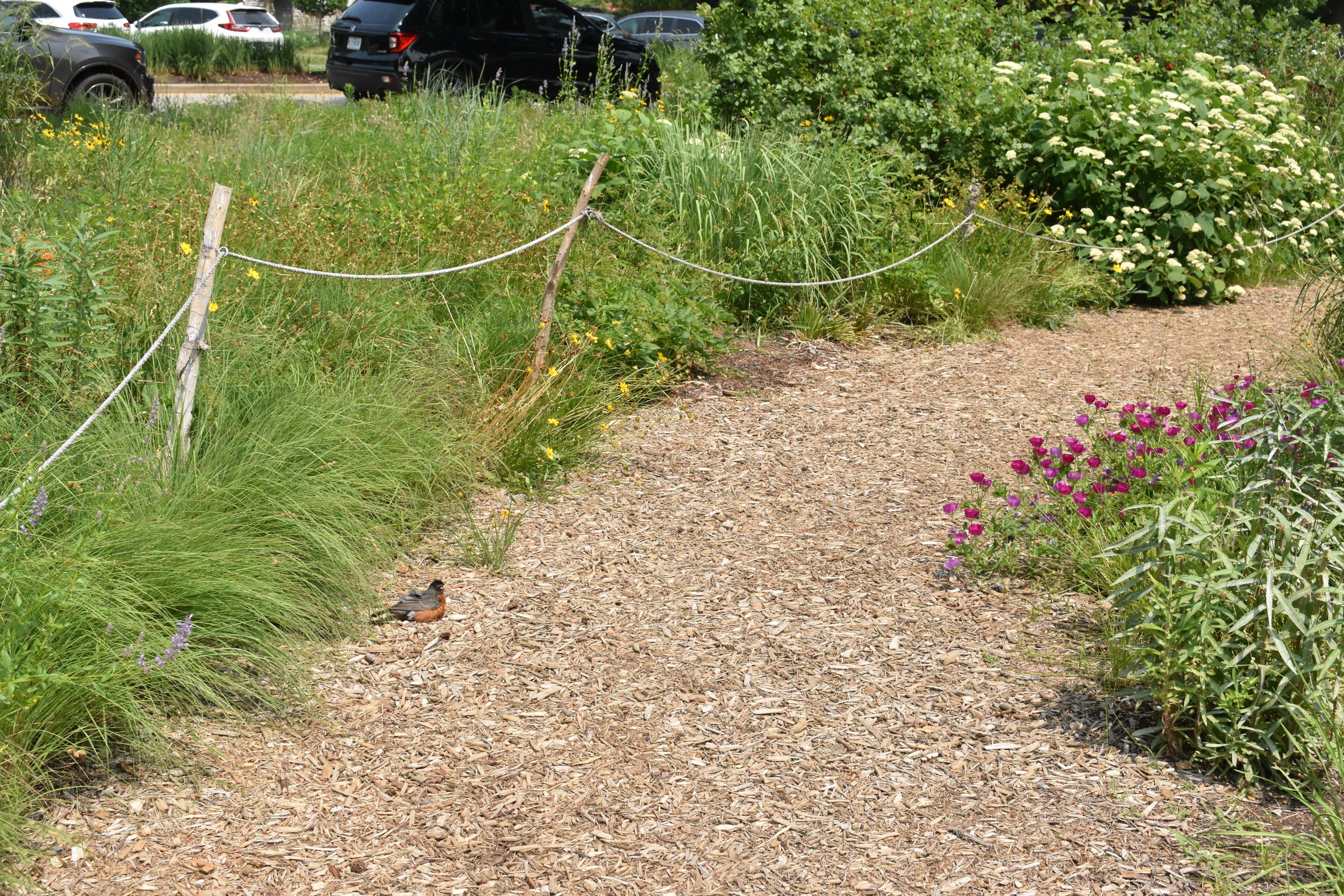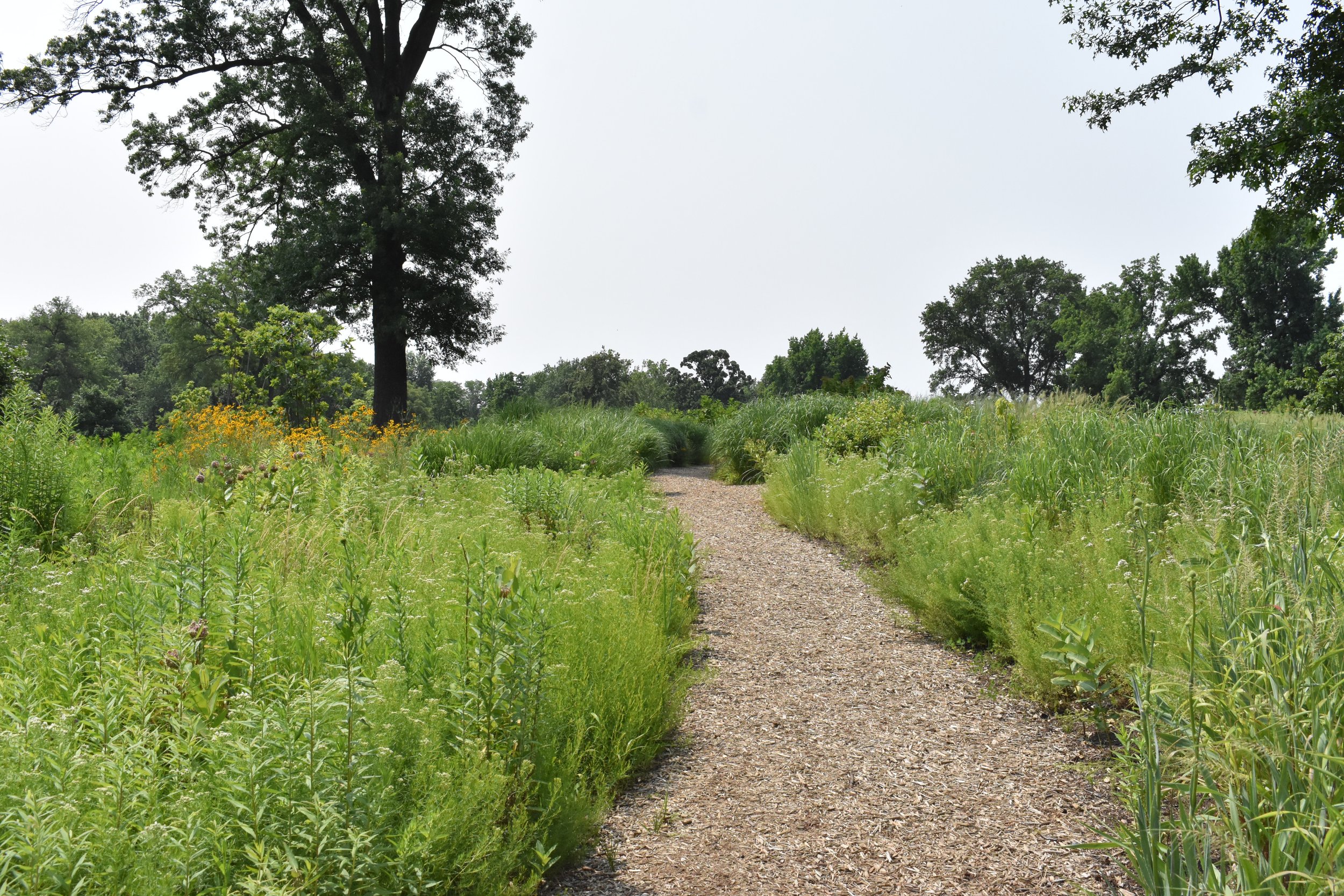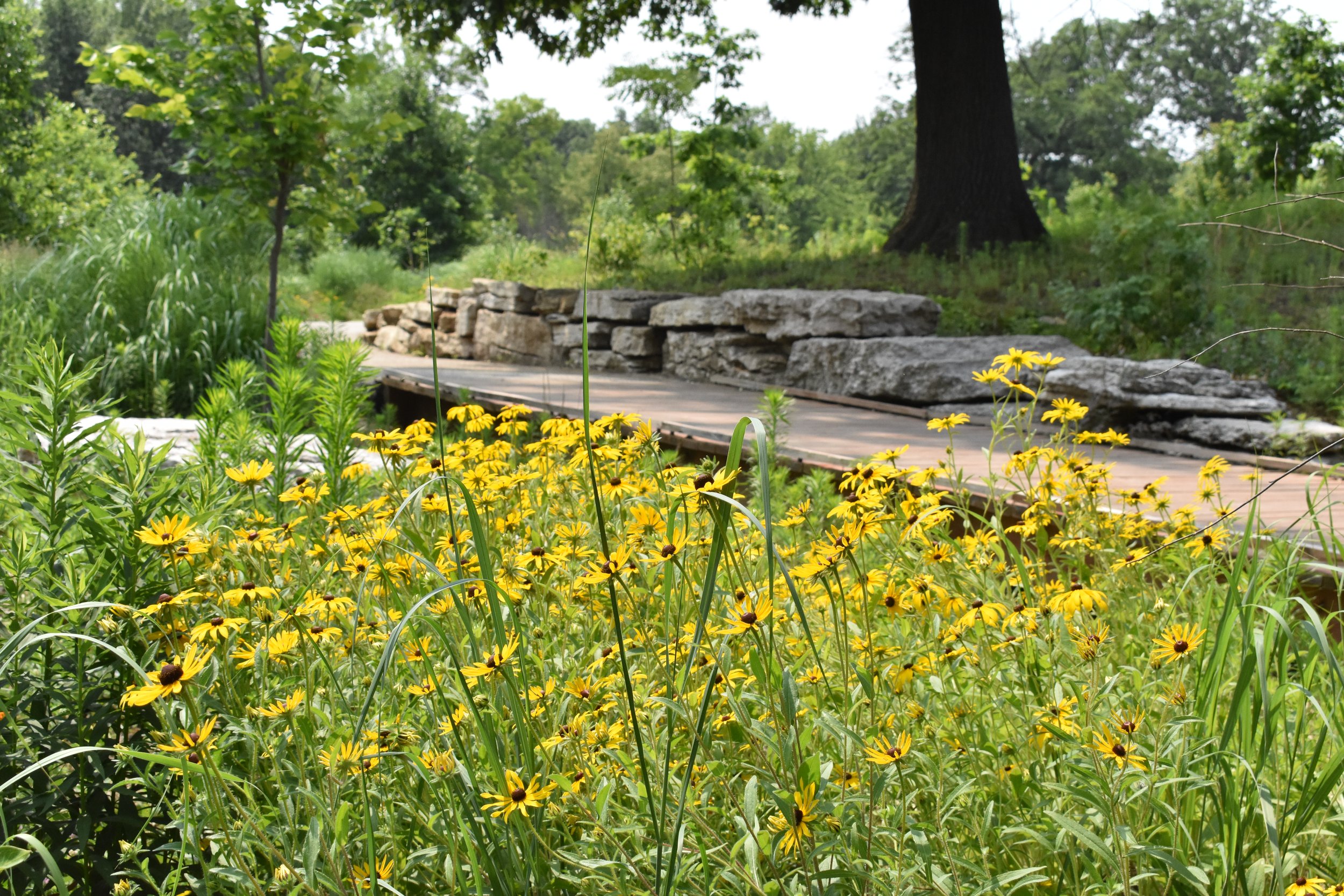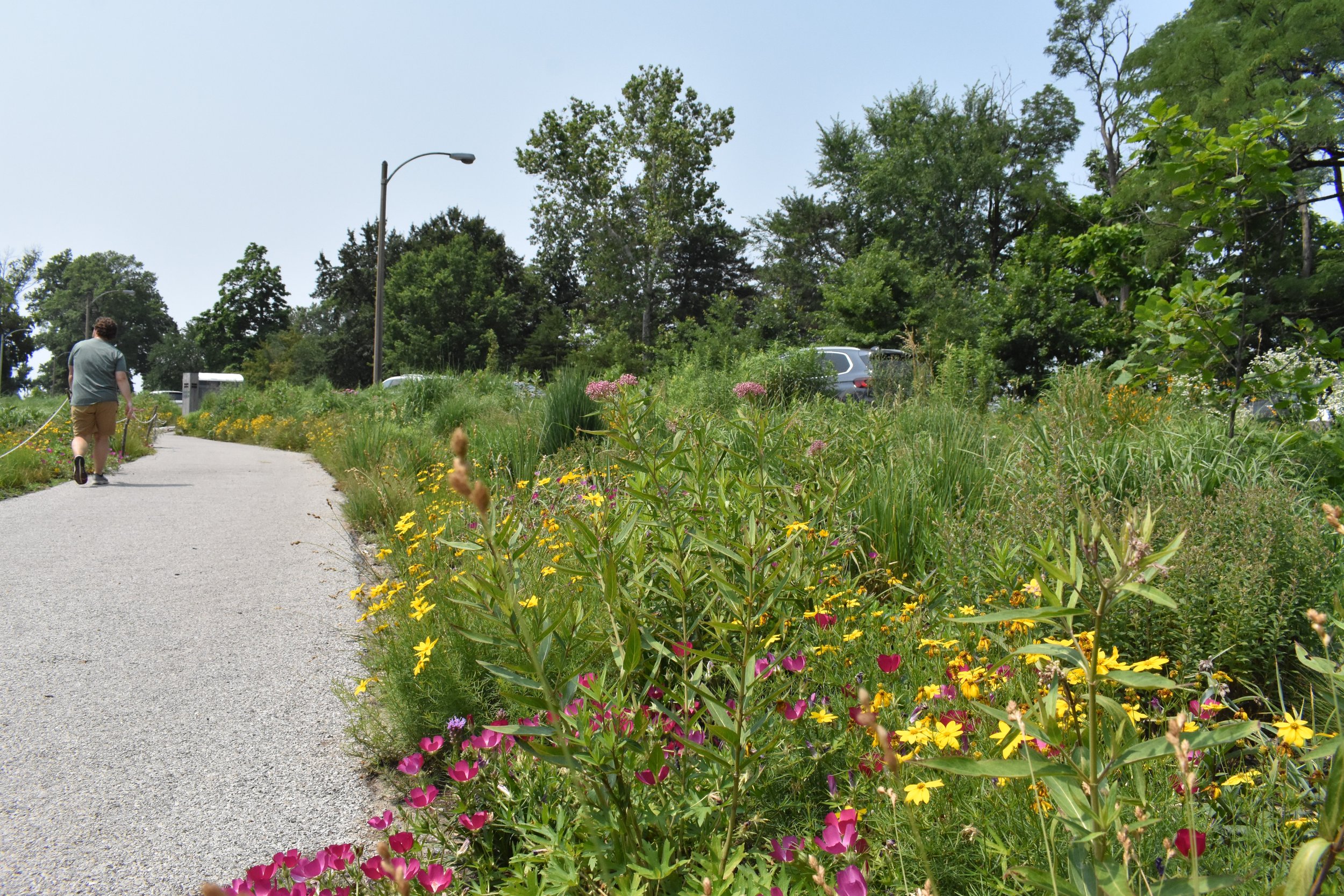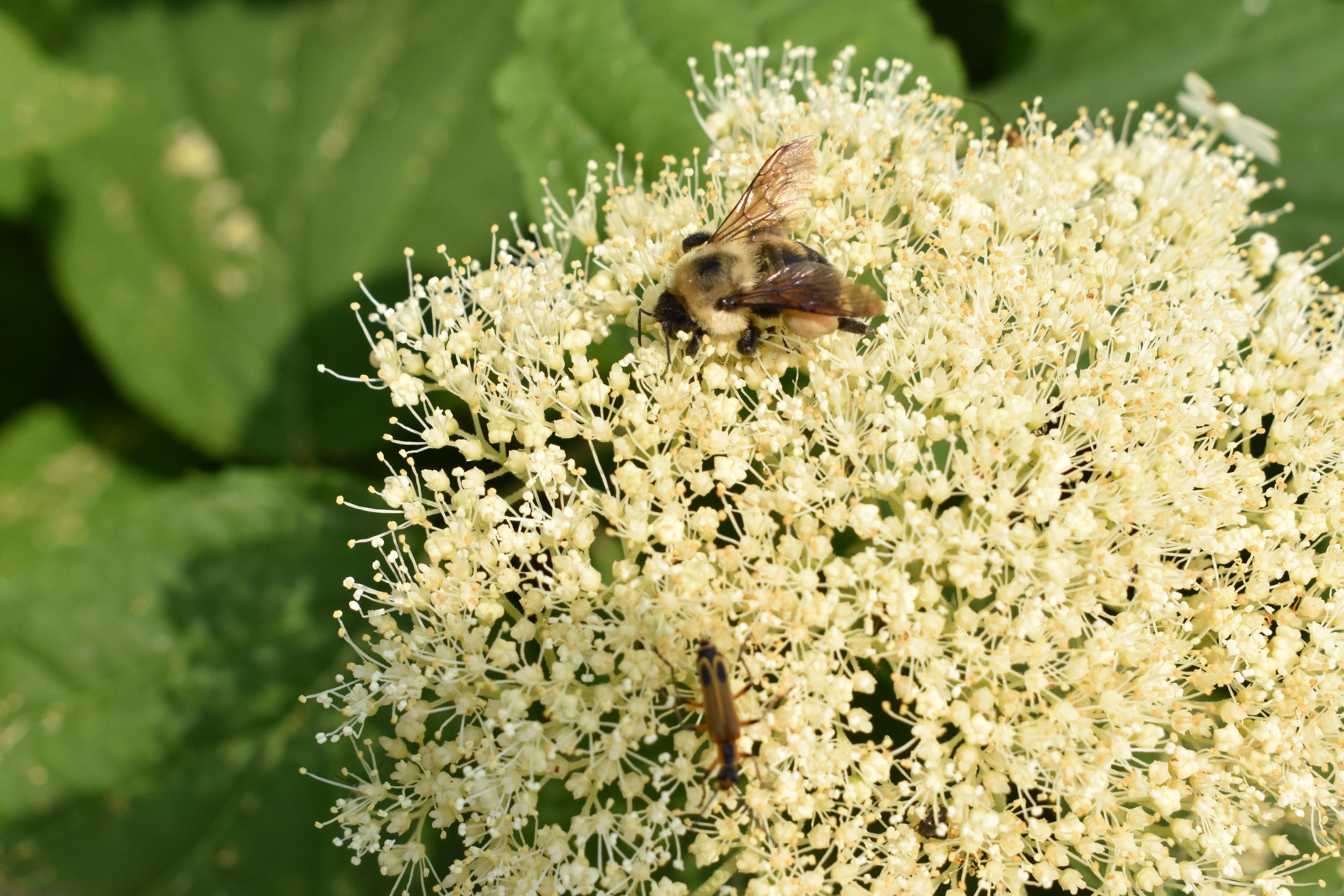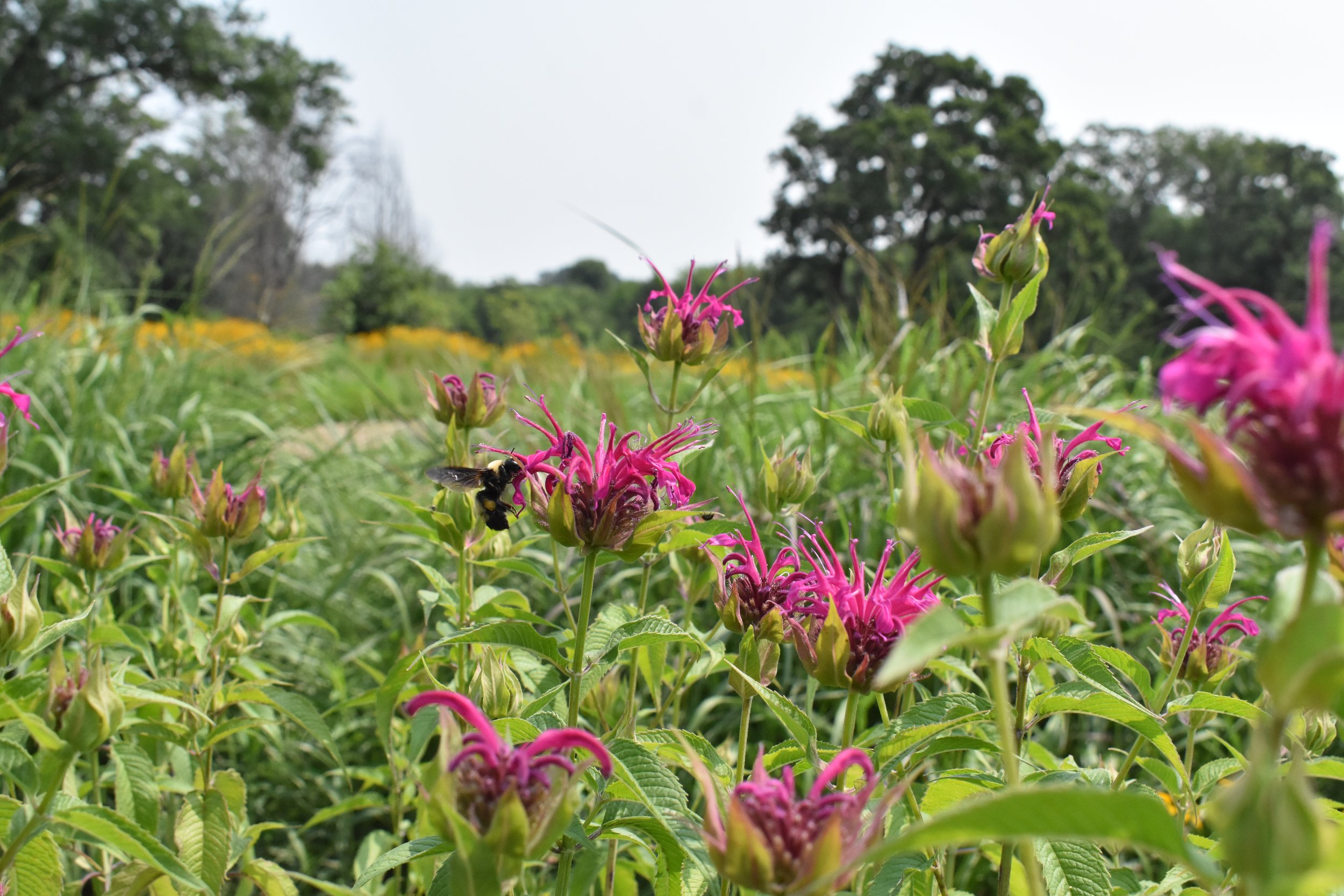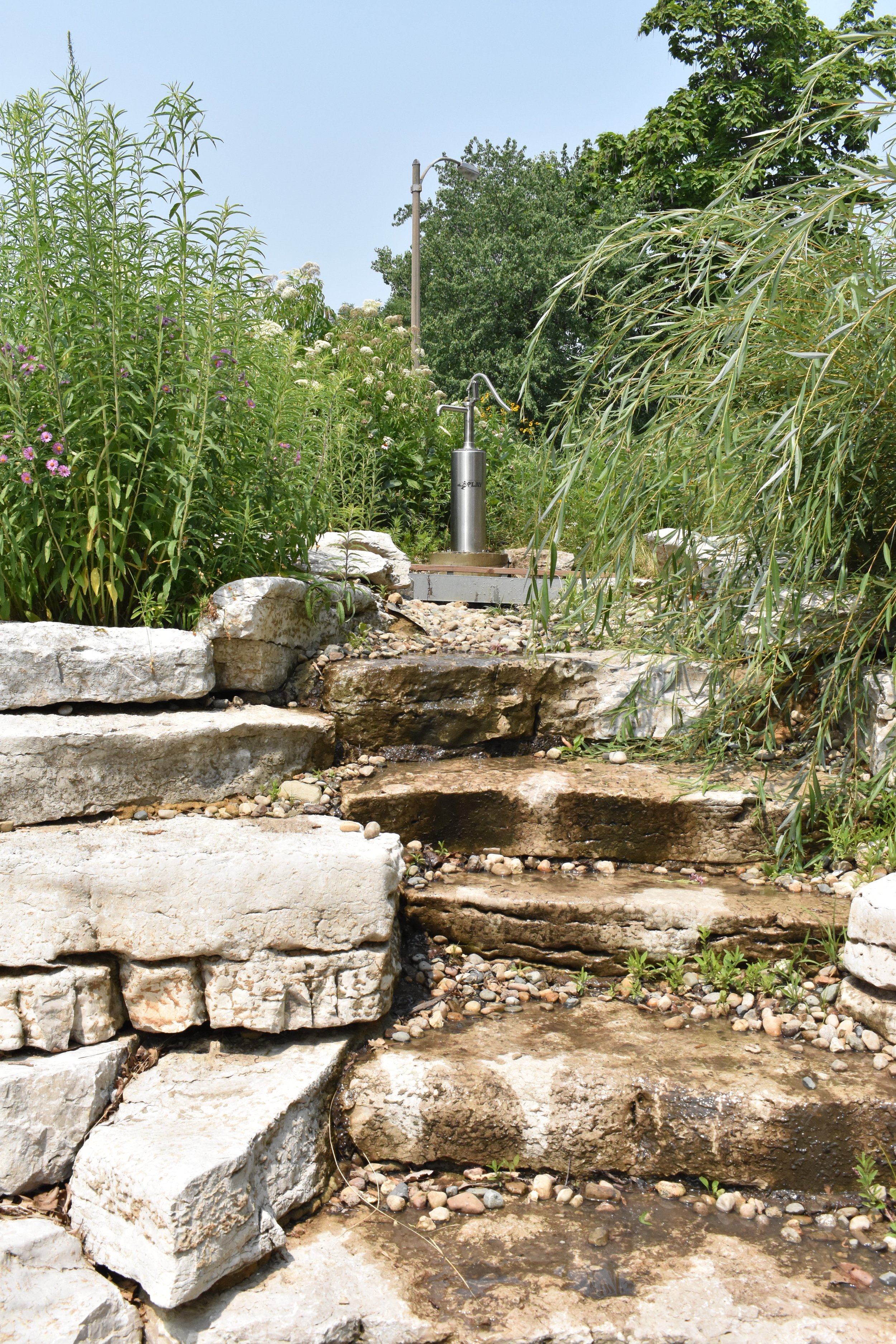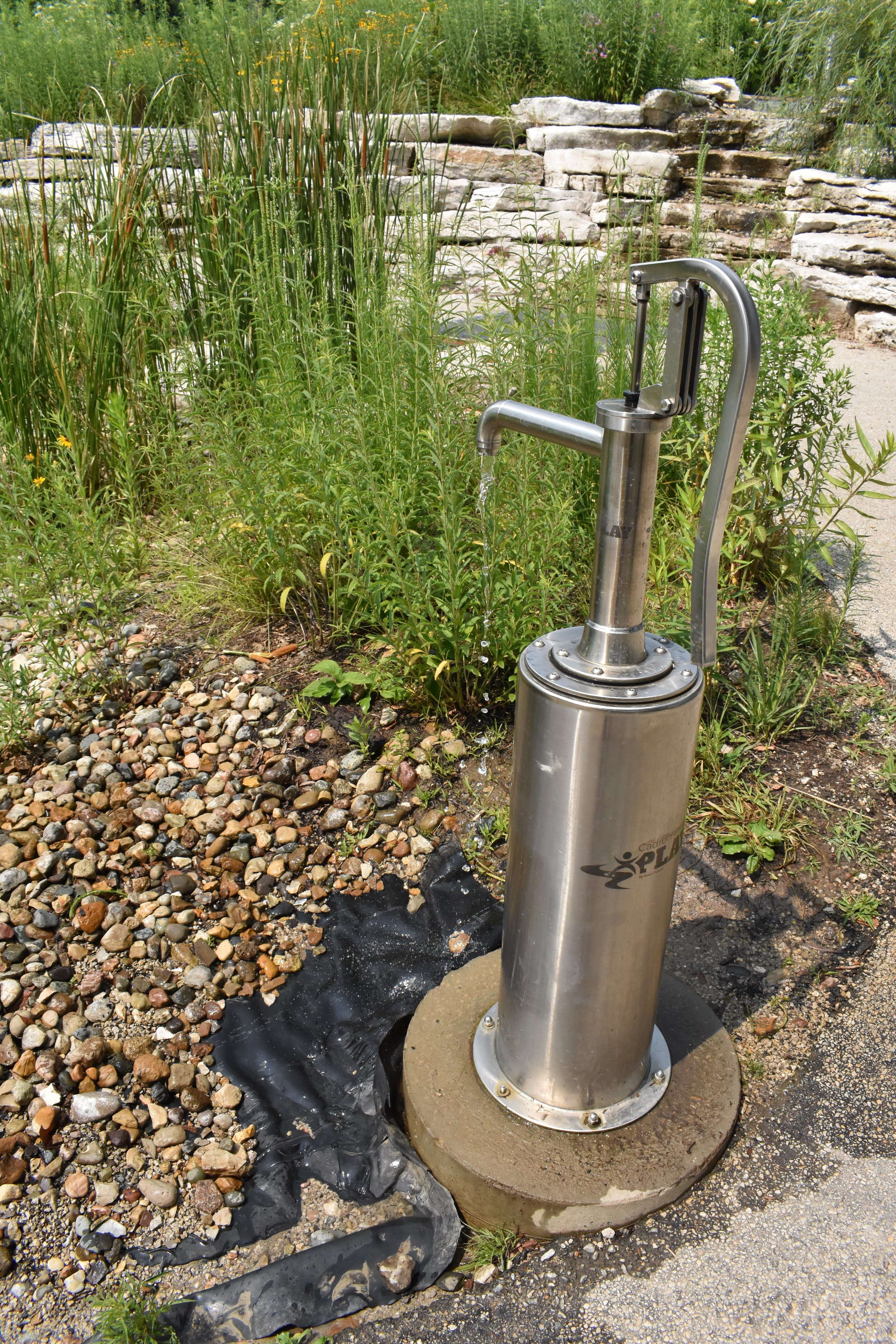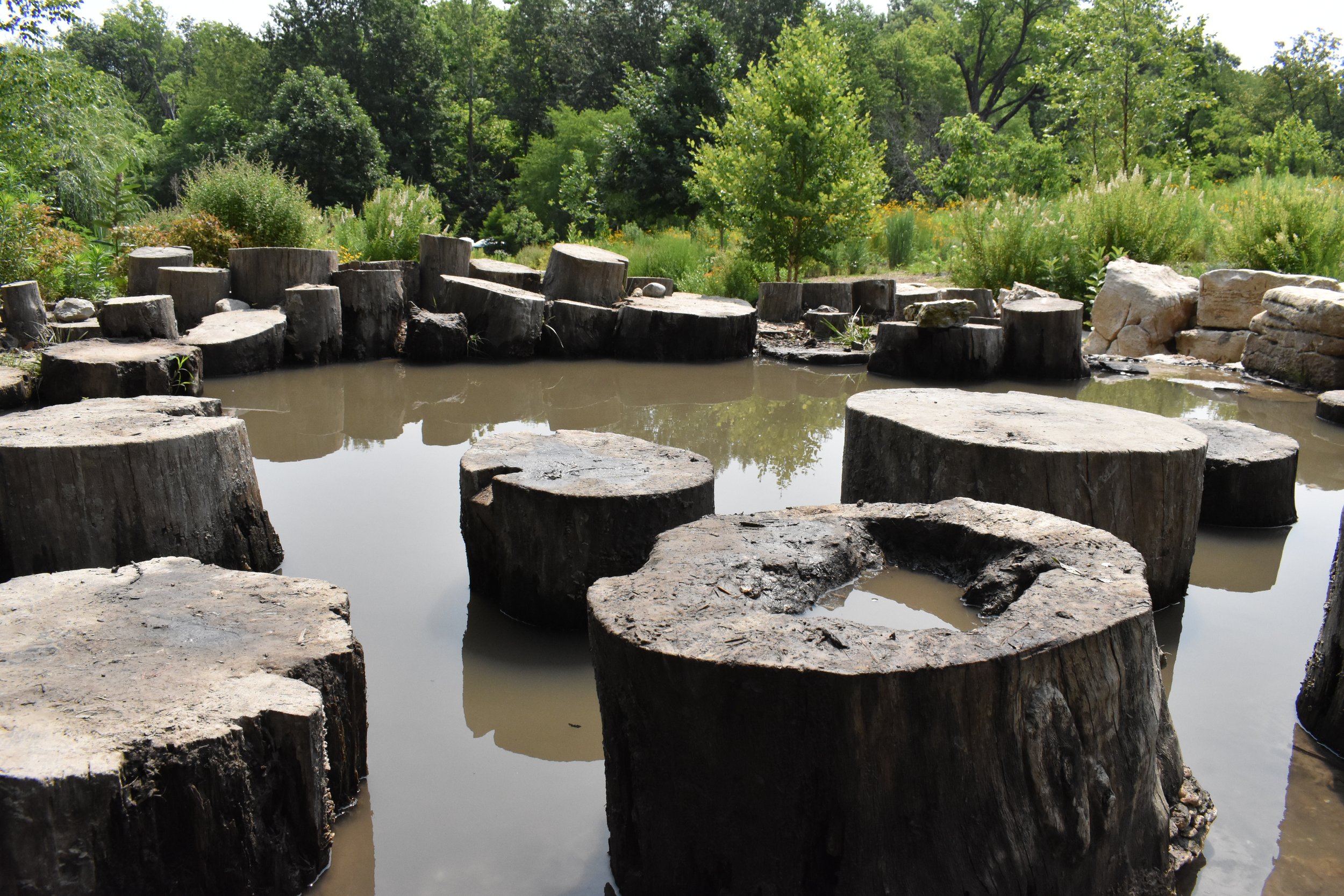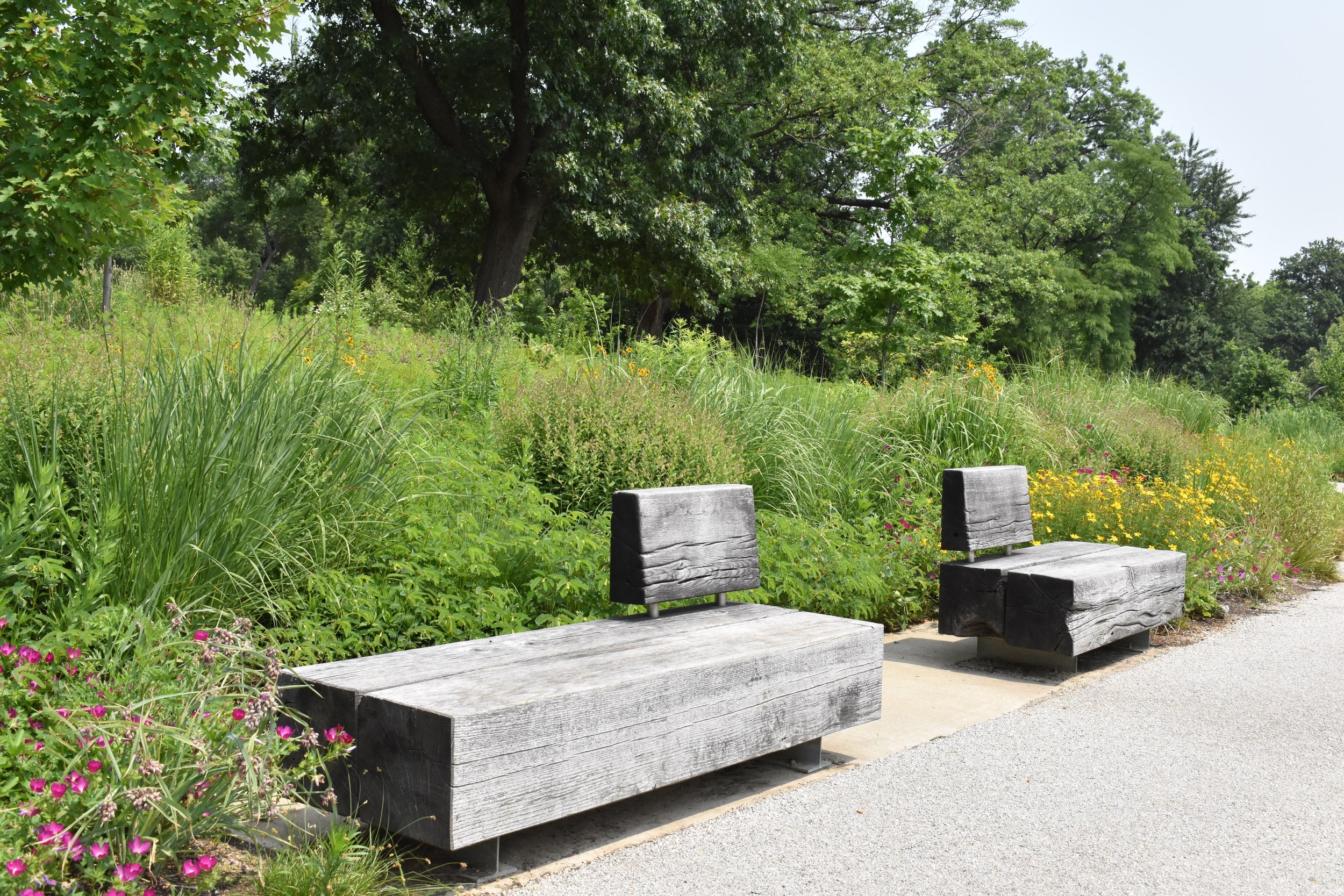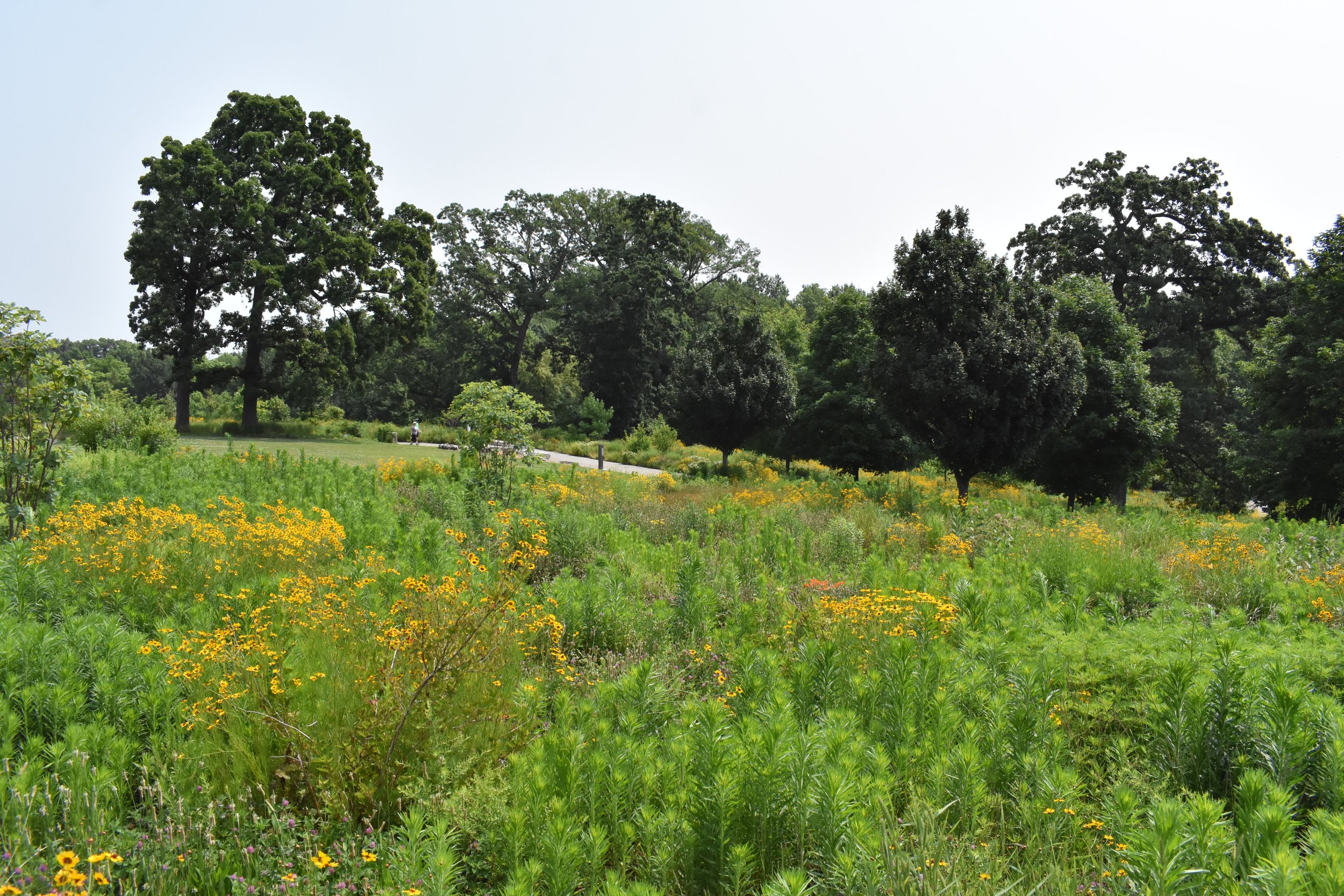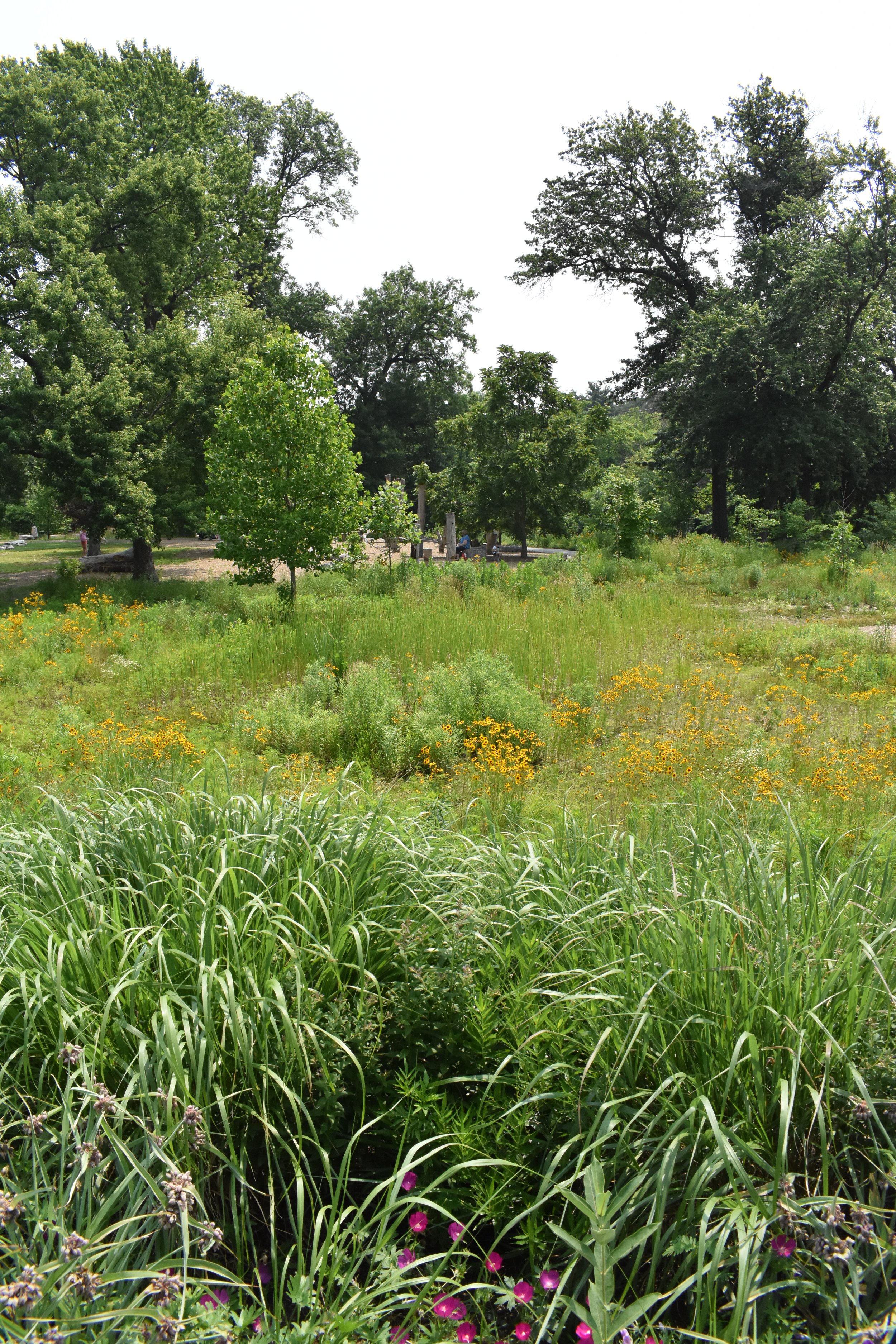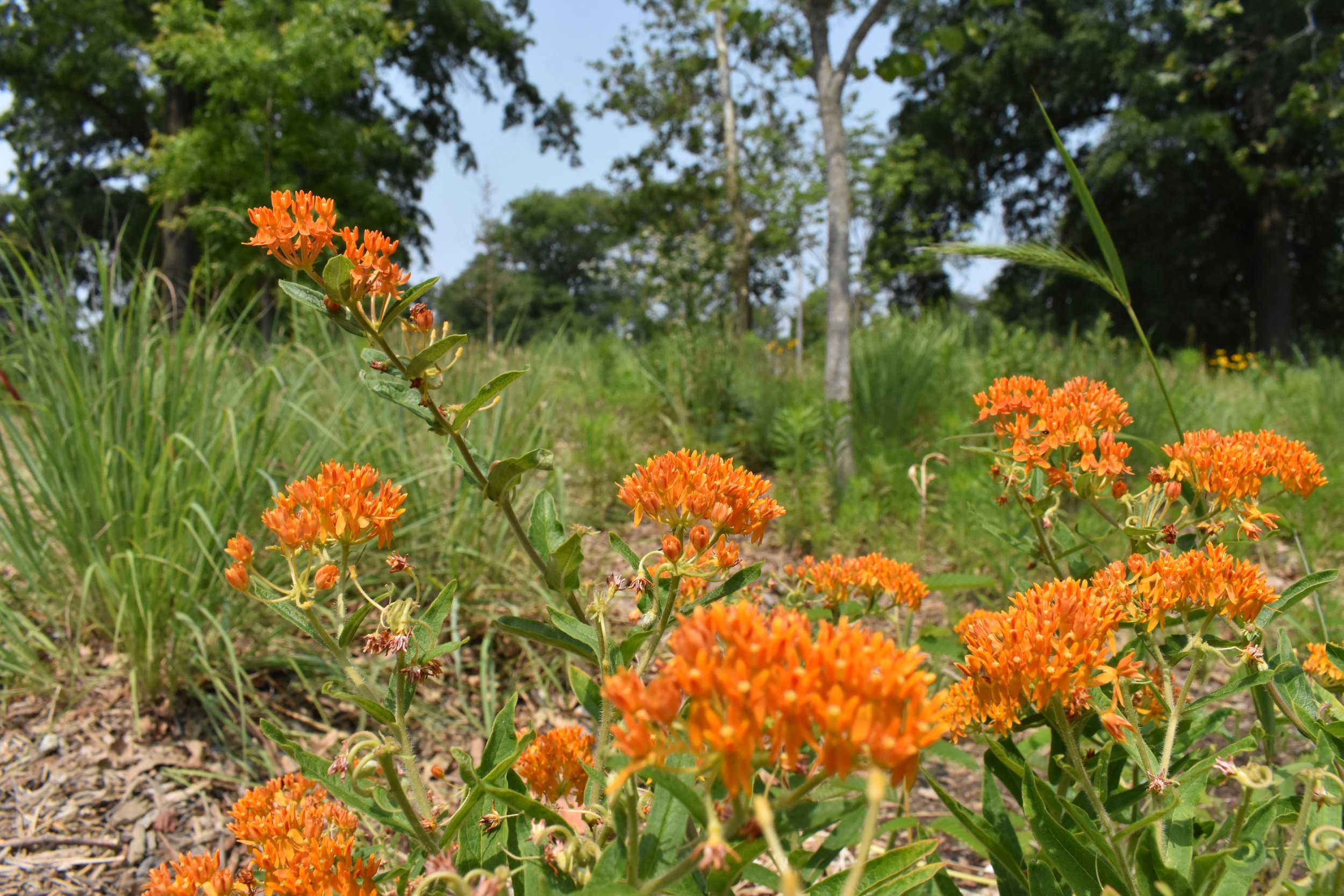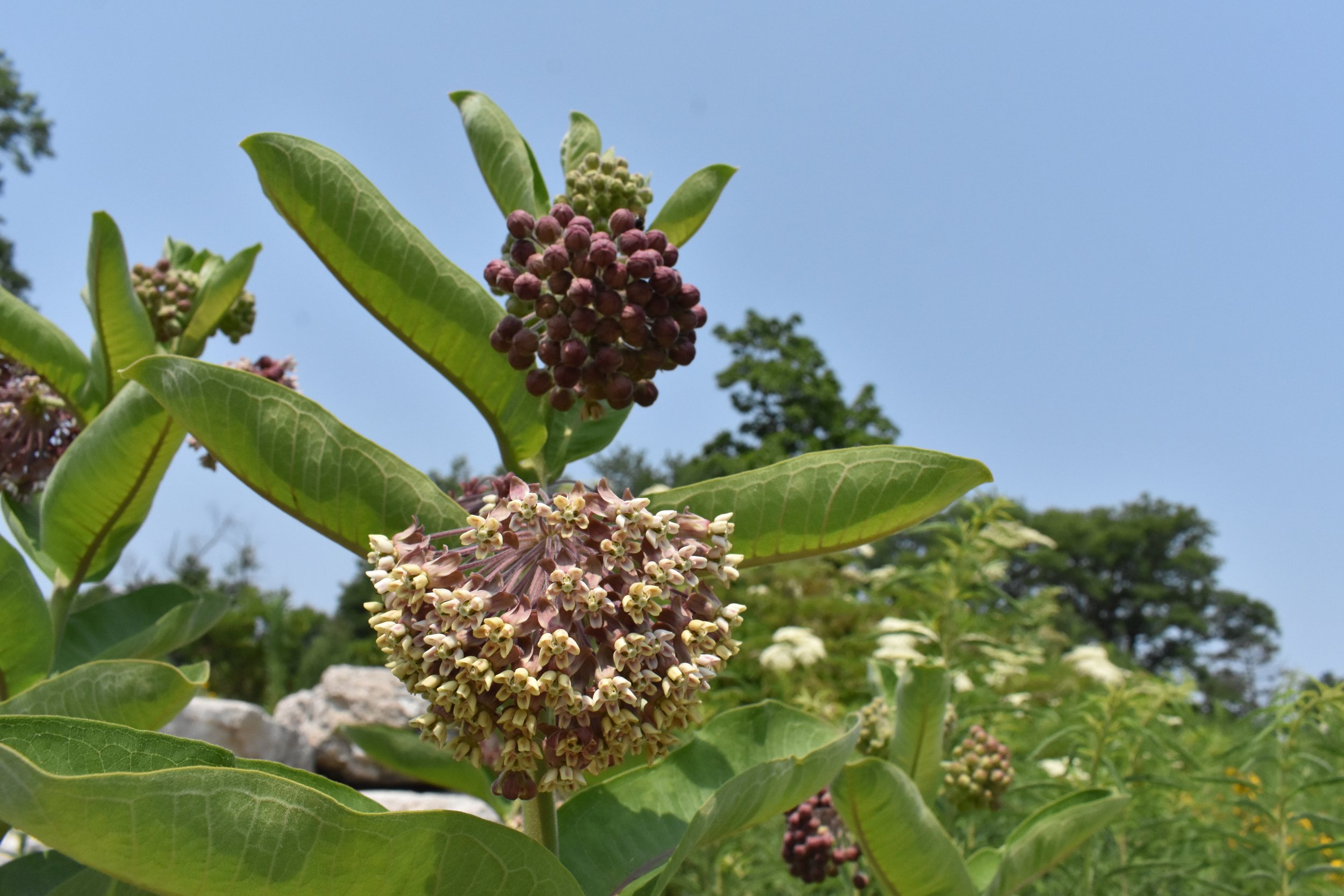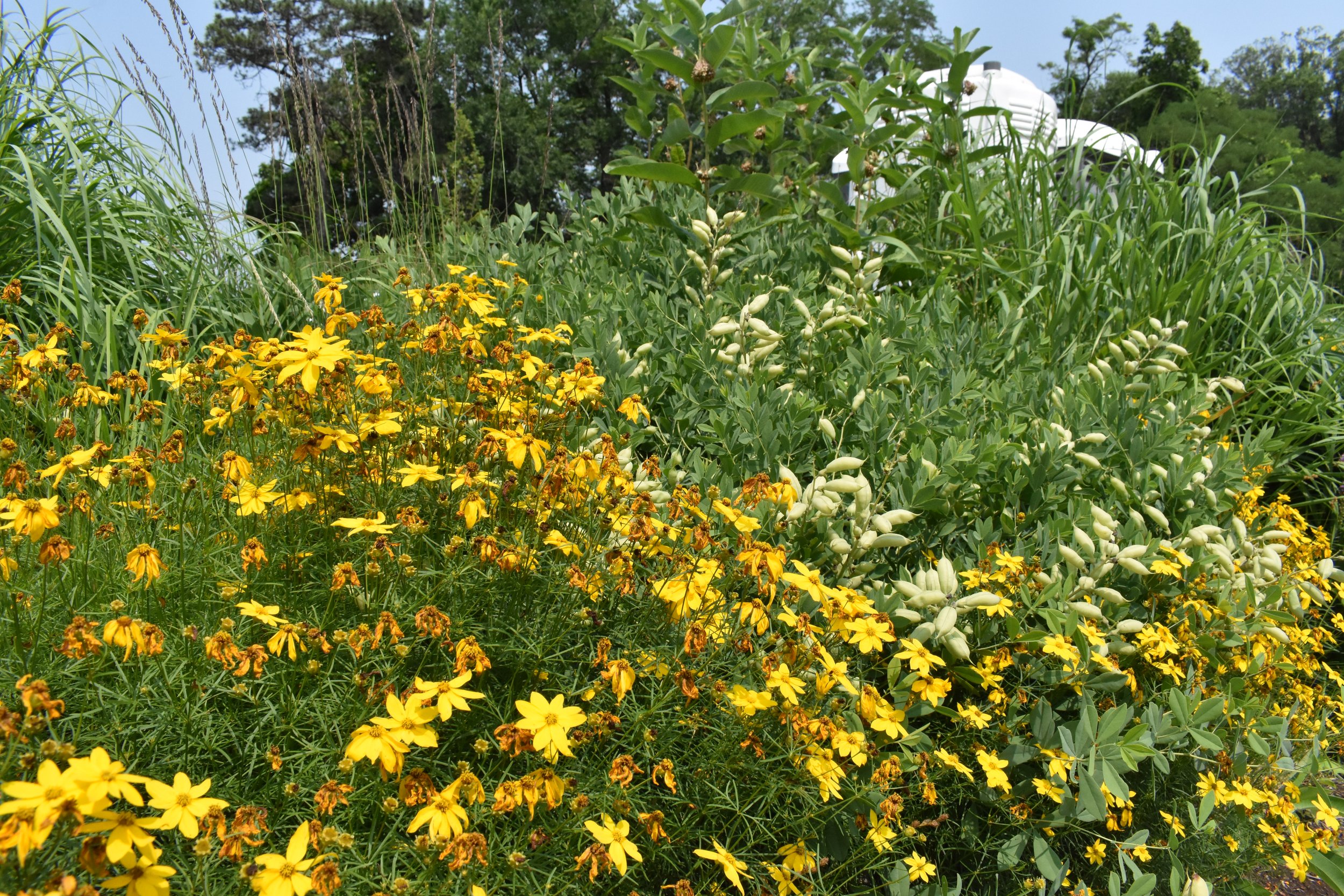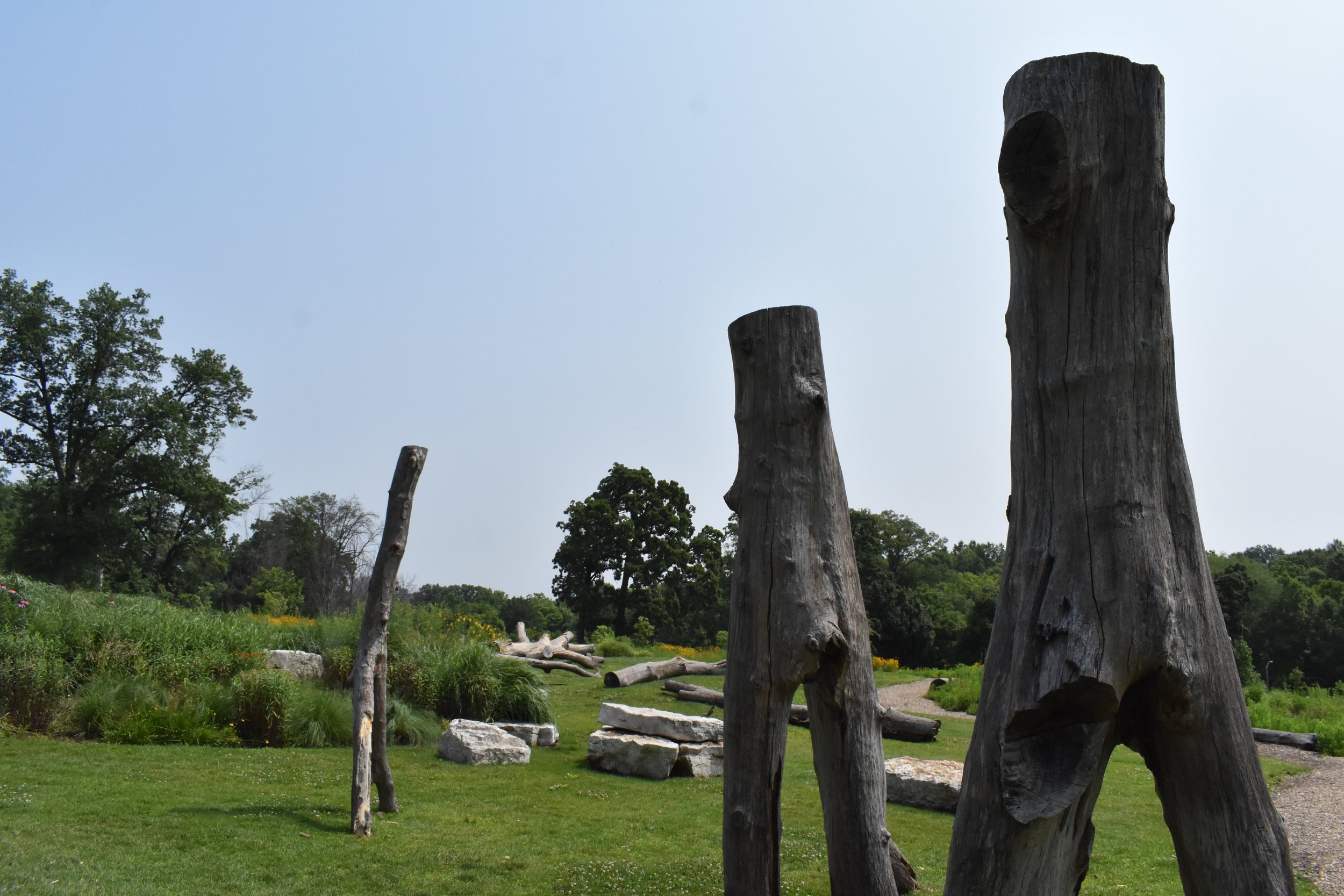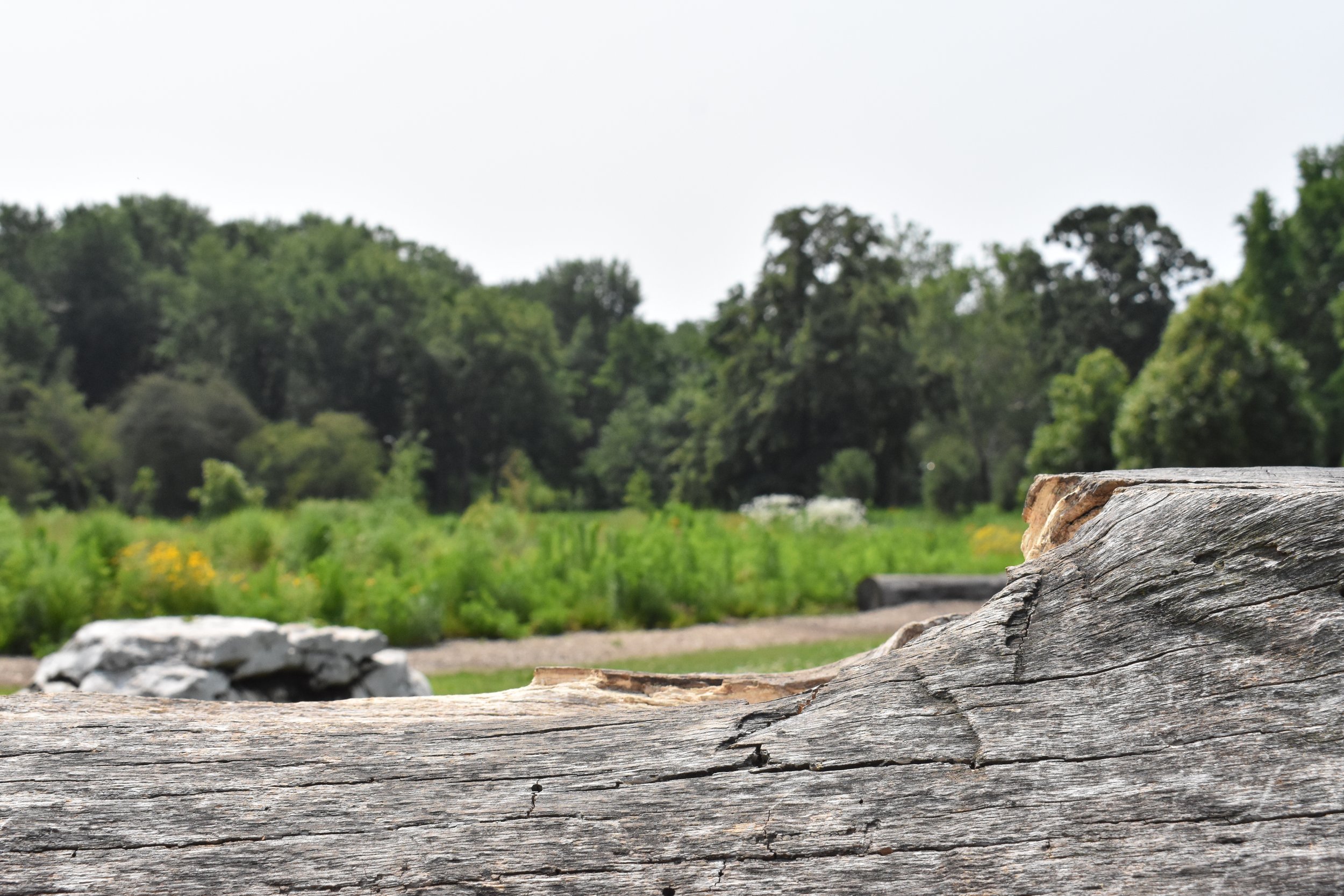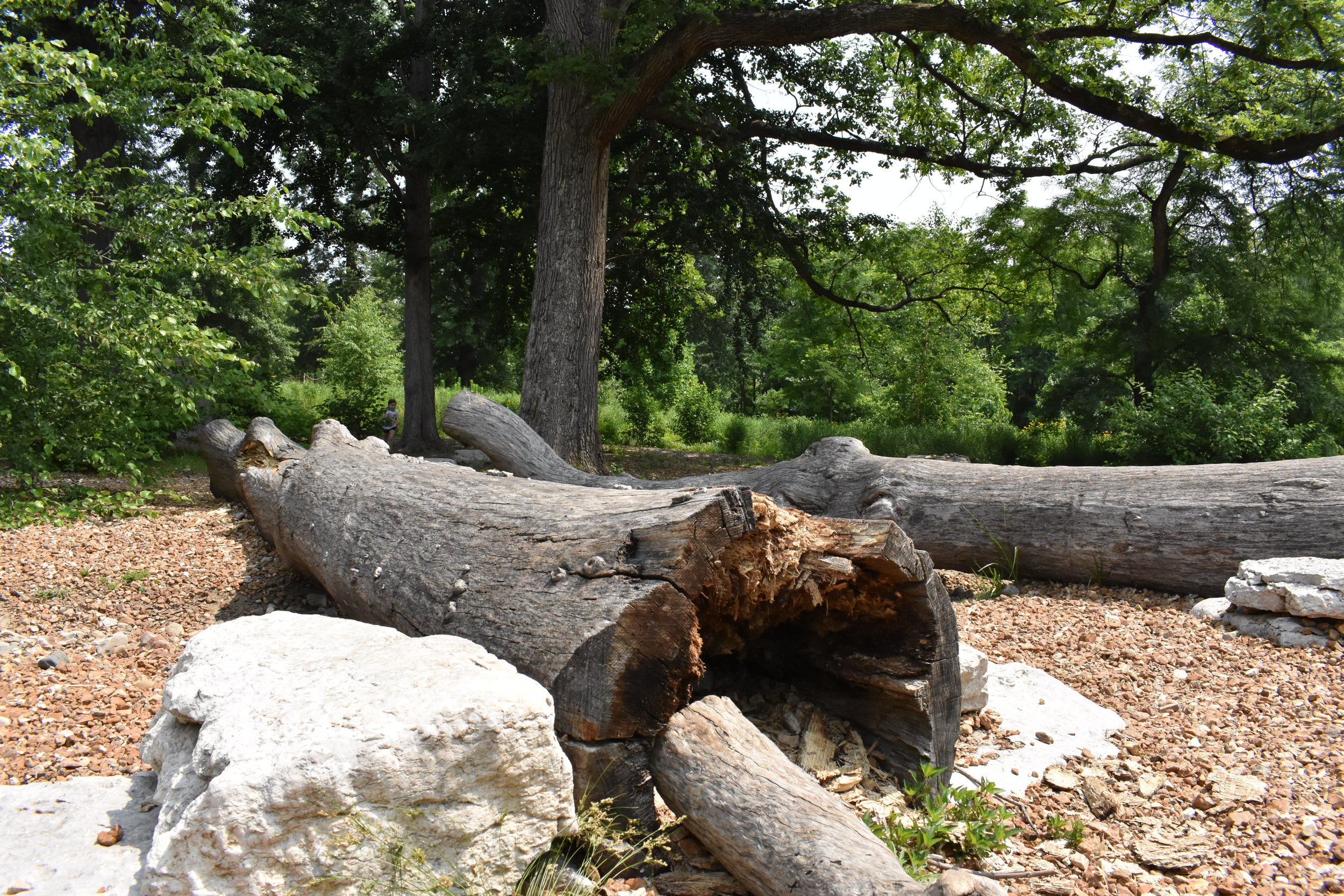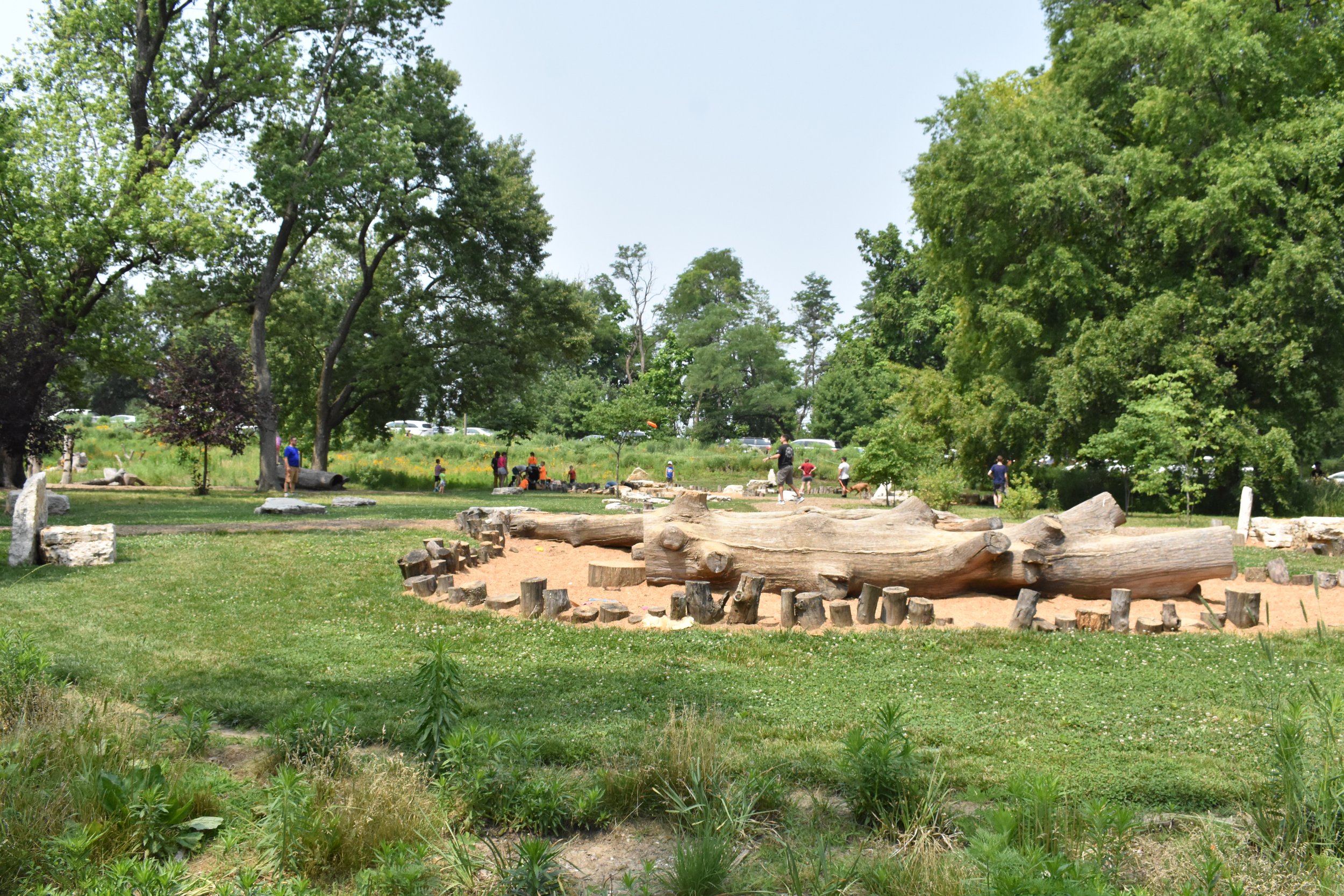We revisited one of the most recent Forest Park developments, the Anne O’C. Albrecht Nature Playscape, which converted ~17 acres of previously underwhelming space just southeast of the Spanish Pavilion to another gorgeous section of the most beautiful urban park in America.
The space was designed to provide a children’s play area with examples of common Midwestern ecosystems, while being a respite for adults wanting to enjoy the area’s more natural flora and fauna vs. walking through a boring field of mowed weeds on the side of a hill.
It opened to visitors in June, 2021; we made our first visit in April, 2022. That post was a chance to document the early days of the project and take in what the landscape designers had in mind prior to the native plantings transforming the expanse of weeds and mowed grasses that existed here for decades.
We had every intention of revisiting a few months later to take whilst in bloom, but failed to follow through in timely fashion.
As luck would have it, we got a gentle nudge from Dominik Jansky, the Director of Communications & Marketing with Forest Park Forever (FPF), who read our original post and offered a guided tour of the playscape to see what’s new.
People in St. Louis are kind and not shy to connect with well meaning citizens. I’ve never felt the “parochialism” that used to be a calling card for people in these parts.
So we set a date in late March, 2023 to meet and get an idea of what’s been going on since our original visit. We were joined by Jessica Seratti, FPF’s marketing and digital media manager.
We met after normal working hours, so Jansky brought his kids and it was sweet to see them enjoying the space and listening to dad on the clock talkin’ shop.
“(The nature playscape has) been an amazing place in the 18 months since it has opened, and it continues to evolve.
I joined Forest Park Forever at the beginning of 2022, and my small team is a primary conduit for information about what’s happening in the Park and all the work our organization is doing. I’m a lifelong St. Louisan, so it’s been fun to experience the Park from the “inside” and get up to speed on all the work that goes into it. And, Playscape-wise, I arrived at the perfect time because I have two elementary school kids who love it.”
Here’s some of what I learned from Jansky and Seratti in my own words:
The impetus for this area’s renaissance was the playscape’s namesake, Ms. Albrecht, a longtime FPF board member who had the vision and resources/gumption to get something on the table.
There was much board and community input on the project. After copious debate on the location and ideals of the project, the area just east of the Spanish Pavilion and the Zoo was selected.
It just makes sense with the topographic advantages here: remediating water runoff, grading a hill that was pretty steep and desolate and bringing a place that could create some gravity pools and water interests.
It took years in planning. The ground had to be worked to bring it back to a diverse environment.
Cover crops were planted to choke out the weeds and anchor the soil. Neither controlled burns nor herbicide burn downs were utilized here.
A tree inventory was conducted. Healthy, existing trees were kept and new ones were planted to provide height interest, shade, species diversity and homes for birds and small mammals.
Jansky informed me that Forest Park is a functional place capable of much positivity, with healthy coordination between the St. Louis Parks and Forestry Departments who do a lot of the mowing, heavy equipment and infrastructure type work, and FPF who have staff and contract horticulturists, ecologists, landscapers and stewards to build a unified team. They partner with the city to bring a something truly special for the citizens of St. Louis, the region and the vast number of visitors/tourists that come to Forest Park.
Jansky said FPF and the city have worked together seamlessly and have built the public’s trust. I must agree, the results are clear.
I asked about metrics on how many people have visited the space. Nearby Wash U has teamed up with FPF to conduct a park-wide assessment which showed ~15.5 million annual visits to Forest Park. They are getting more digital in their analyses to quadrant off the park and get better data on this specific area.
FPF has also fostered a healthy relationship with some community organizations in St. Louis and the many suburbs to the west to utilize the nature playscape.
They’ve hosted St. Louis Public School students and educators to conduct field trips. Over 21 trips have taken place as of publishing. The suburban districts are visiting as well; Forest Park is a regional asset.
The St. Louis Public Libraries have done story time readings here.
The original design of this space is evolving. I learned that kids can teach professional designers what works and what doesn’t.
Like, “I didn’t know you could get stuck there”, or “I didn’t know kids could work together to move those rocks.”
Based on crowd-sourced uses, adjustments have already been made on how to optimize the space.
For instance, in July, 2022 we had some severe flooding. A massive tree fell and the landscape designers decided to incorporate the felled tree into the play scape. They shortened the limbs and carved out some climbing holds to challenge the kiddos to explore and climb. The remaining lumber from the felled tree provided an opportunity to frame the space.
The originally plotted pathways and eventual cut-throughs informed how people are using the space. FPF have had to make adjustments. The kids make their own paths based on common sense, and they’ve adjusted the paths to channel the natural movement of kids exploring.
Things are returning to nature in these parts.
Serrati said the red-tailed hawks have returned in numbers previously unseen. Plenty of small mammals are here now to build an ecosystem based on native plants and cover.
I’m amazed at how planned childhoods and supervised play has evolved even since we had little ones in the early to mid-2000’s, especially in suburban wealthy communities. In our view, this is exactly what kids need, running around and being curious and daring. A place for city kids and suburban kids to be at peace in a natural, calming environment.
I promised to come back as our March visit was still a bit sparse on plant life.
I returned this past weekend on a gorgeous June day and was blown away by the maturity of the plantings and the fruition of the vision. The birds, small mammals and insects are teeming.
I can’t wait to go back at night to hear the sounds that this previous expanse lacked for years: noises of nature at night. The sound of insects and wind blowing through the plants is a sound that will always calm me. We have a new public space to enjoy this, right in an urban city.
Even if you don’t have little ones in tow, you must check this out and find a solid respite from the stresses of life. A place to see and hear the animals we usually overlook.
The water features/runoff remediation areas are fun and relaxing.
This is a quality addition to Forest Park, one that I would like to see more of. Not necessarily more kid spaces, but more no-mow reclamation of boring spaces to a microcosm of wildlife and freedom to do what the Midwest will do if you leave it alone, but take care of it.
The vistas, once a mere hill are now framed in beauty.
They chose to plant species that would grow fast, and allow the true natives to seed and allow the space to do what Mother Nature does. The space will continue to evolve.
It is not overly programmed, it is natural. I asked Jansky’s little kiddos if this is better than a day at Monkey Joe’s in the burbs. They said “no, but you can see of lot of owls here.”
Appreciate the honesty of the little ones. Love it!
You might visit this place today and think it’s been natural for years. No, this is what it takes to reclaim mowed expanses of weeds into an ecosystem of diverse flora and fauna.
Well done FPF and St. Louis City.
It’s high time to take what’s been learned here and apply it to the other 107 parks in St. Louis.
Cheers, friends.

